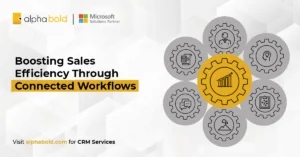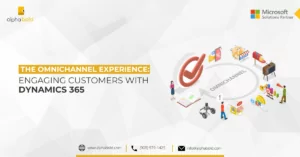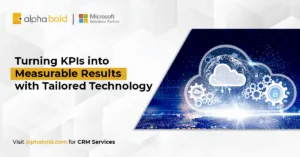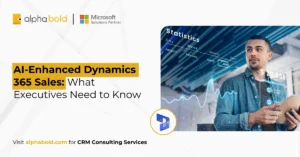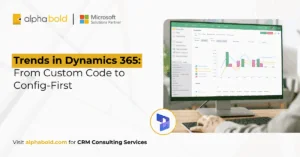Bring Your Own AI: What Dynamics 365’s New Openness Means for Business Leaders
Table of Contents
Introduction
Last month, Microsoft did something unexpected with Dynamics 365. They announced the Model Context Protocol (MCP), which is basically a standard way to plug any AI model into Dynamics, not just Copilot.
For anyone who’s been in the enterprise software trenches, this seems too good to be true. Microsoft voluntarily opening up their platform to competitor AI models? There has to be a catch.
Turns out, there kind of isn’t. Or at least, the catch is different than expected.
What Dynamics 365 MCP Actually Does
The MCP creates a standardized interface between Dynamics 365 and AI models. Think of it as a universal adapter, instead of building custom integrations for every AI tool you want to use, MCP provides one connection method that handles:
- Data access and permissions
- Context management (what the AI needs to know)
- Security boundaries (what it’s allowed to see)
- Audit trails (who asked what, when)
Microsoft open-sourced the protocol. Anyone can inspect it, implement it, or build on top of it. The GitHub repo is public.
Why This Is Actually a Big Deal
The traditional enterprise AI integration goes like this: You want to use a specialized AI model. Your vendor says “sure, we have an API.” You spend 6 months building a custom integration. It works. Then a major update happens and everything breaks. Repeat.
MCP changes the equation. Instead of custom point-to-point integrations, there’s now a standard protocol. AI vendors can build MCP support once, which works across any Dynamics instance. Organizations can swap AI models without rebuilding their entire integration layer.
The real kicker? It enforces security at the protocol level. Role-based access controls from Dynamics flow through to whatever AI you’re using. The AI only sees what the user is permitted to see.
Explore How MCP and Custom AI Integration Elevate Dynamics 365 Performance.
AlphaBOLD brings practical experience architecting AI solutions that align with your operational goals—not just what's in the standard playbook.
Request a ConsultationWhere This Gets Practical
Regulated Industries:
A medical device company needs AI for customer support but can’t risk hallucinated medical advice. Generic models aren’t trained on their specific compliance requirements. With MCP, they can deploy a healthcare-specific AI model that understands FDA regulations and medical terminology, while still maintaining HIPAA compliance through Dynamics’ existing security framework.
The AI connects via MCP, inherits permission structures, and only processes sanitized data. No custom compliance layer needed.
Global Operations:
A multinational company operates across Europe, Middle East, and Asia. English-centric AI models don’t handle regional business practices, local regulations, or cultural context well.
Through Dynamics 365 MCP, different AI models can be deployed per region, each one trained on local requirements. The protocol routes queries to the appropriate model based on user location while maintaining centralized data governance in Dynamics.
Specialized Workloads:
A manufacturing company spent years training a machine learning model on equipment failure patterns. That model is incredibly valuable for their field service operations, but it lives outside Dynamics in their data science environment.
MCP lets that custom model plug directly into field service workflows. Technicians get AI-powered recommendations based on proprietary failure prediction, without the company rebuilding their model to fit Microsoft’s framework.
The Technical Architecture
MCP sits as a middleware layer between Dynamics 365 and AI models. When a user interacts with AI through Dynamics:
- The request goes through MCP with the user’s security context
- MCP validates permissions and prepares the relevant data context
- The AI model receives only what the user is authorized to access
- Responses flow back through MCP for logging and validation
- Audit trails capture the interaction for compliance
The protocol is model agnostic. Whether it’s GPT-4, Claude, a specialized industry model, or something built in-house, the connection method is the same.
Microsoft published the specification openly. AI vendors can implement MCP support without licensing anything or getting Microsoft’s permission. This is notably different from typical enterprise software “openness.”
What Microsoft Is Actually Playing At
This move makes more sense when viewed through a platform strategy lens. Microsoft isn’t abandoning Copilot, they’re making a bigger bet.
If Dynamics becomes the standard platform that works with any AI, Microsoft wins even when customers choose non-Microsoft models. They’re prioritizing the infrastructure layer over controlling every AI interaction.
For enterprises, this reduces a major risk: betting your entire AI strategy on one vendor’s roadmap. Business requirements change. AI capabilities evolve rapidly. Having the flexibility to switch models without rebuilding integrations is strategically valuable.
The Catch
Governance Complexity:
Multiple AI models means multiple things to govern. Who approves new model deployments? What’s the vetting process? How do you monitor for model drift or unexpected behavior across different AI systems?
These are organizational challenges, not technical ones. The protocol makes integration easier, but someone still needs to establish policies and oversight.
Integration Work Still Exists:
MCP standardizes the connection, but configuring AI models to work effectively with Dynamics data requires expertise. Understanding your data schema, setting up proper context passing, and tuning model behavior isn’t automatic.
The barrier is lower than custom API integrations, but it’s not zero.
Model Management Overhead:
Running multiple AI models means multiple relationships to manage, different vendors, different SLAs, different pricing models, different update cycles. The operational overhead is real.
For organizations that genuinely need specialized AI capabilities, this trade-off makes sense. For those who just need basic functionality, sticking with Copilot might be simpler.
Who Should Care About This
MCP matters most for:
- Regulated industries where generic AI models don’t meet compliance requirements
- Global organizations needing region-specific AI capabilities
- Companies with proprietary AI/ML they want to integrate with their ERP
- Anyone nervous about vendor lock-in who wants flexibility in their AI strategy
For smaller organizations with straightforward needs, Copilot’s built-in functionality might be sufficient. Not every problem requires multiple AI models.
Bring AI into Your Dynamics 365 Environment—Your Way
AlphaBOLD has hands-on experience designing AI architectures that fit business requirements not just vendor roadmaps.
Request a ConsultationWhat It Means Going Forward
The MCP represents a shift in how enterprise platforms approach AI. Instead of monolithic “our AI or nothing” approaches, there’s recognition that different use cases need different AI capabilities.
This opens up architectural possibilities that weren’t feasible before. Organizations can design AI strategies around business requirements rather than contorting requirements to fit available tools.
The protocol is still new. Real-world implementations are just starting. But the foundational change, moving from proprietary integrations to open standards, is significant for anyone planning long-term AI investments in their Dynamics environment.
The Bottom Line
Microsoft making Dynamics work with any AI model isn’t altruism. It’s strategy. But it’s strategy that happens to align with what enterprises actually need: flexibility, reduced lock-in, and the ability to use specialized AI where it makes sense.
For IT leaders and architects, MCP is worth understanding. Not because every organization needs to immediately deploy five different AI models, but because the option to do so changes the strategic calculus around AI adoption in enterprise systems.
The era of “you’ll get the AI we give you” is ending. What comes next will be more complex but also more capable.


